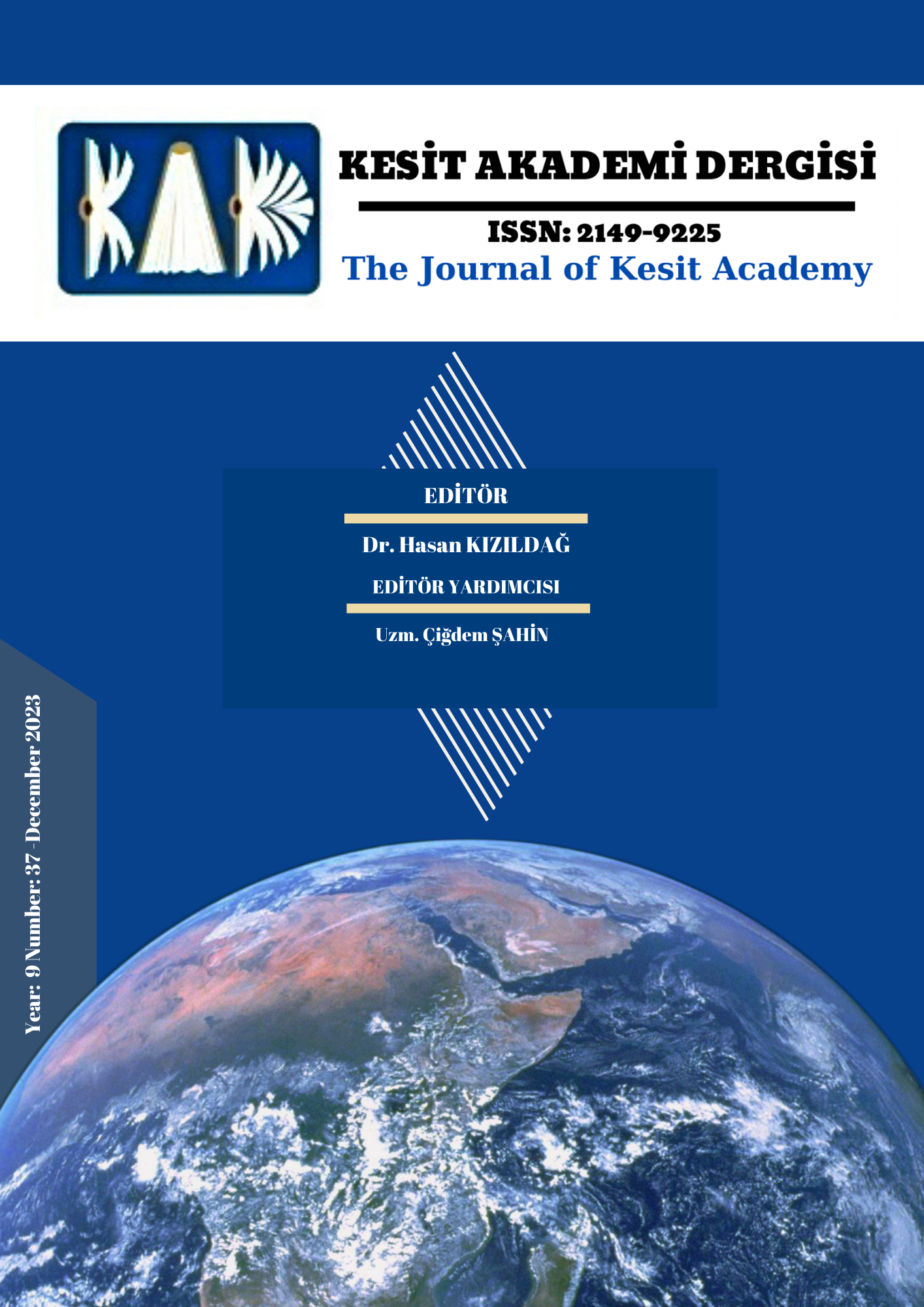Author :
Abstract
Aydınlanma sonrası dönemde Kıta felsefesinde pozitivist ve hümanist ideolojilerin etkisiyle failliğin yalnızca insan-özneye ait bir unsur olduğu ve insanın bilinçli yönelimleri, iradesi ve arzusunun toplumsal yapıyı tek fail olarak şekillendirdiği görüşü hâkim olmuştur. Ancak doğal kaynaklardaki hızlı tükenme, küresel insan göçleri, salgın hastalıklar gibi süreçler antroposentrik bakış açısının dünya sorunlarını açıklama ve çözüm bulmada yetersiz kaldığını göstermektedir. Arkeoloji, antropoloji, felsefe gibi disiplinlerde son yıllarda yeni materyalist teoriler başlığı altında toplanan bir dizi düşünce sistemi tartışılmaktadır. “ maddeye dönüş” olarak tanımlanan ve madde/malzemeye faillik atfeden bu teoriler sanat dünyasında da etkili olmuş; sanat tarihi, sanat eleştirisi, sanat eğitimi ve sanat eseri üretimi alanlarında yerleşik uygulamaların sorgulanmasına yol açmıştır. Maddi faillik tartışmaları güncel heykel sanatında malzemeye yeni bir bakış açısı, değerlendirme ve konum sağlamıştır. Buna paralel olarak güncel heykel sanatında malzeme geleneksel rolünden sıyrılarak aktif içerik oluşturucu unsur haline gelmiştir. Bu çalışmada amaç malzemenin güncel heykel sanatındaki faillik konumunu hazırlayan ideolojik ve sosyo-kültürel hareketlerin izini sürmek; malzemenin eserin anlamını oluşturmada oynadığı rolün sanatçı, sanat eleştirmeni, sanat tarihi uzmanı açısından farkındalığını araştırmaktır. Ayrıca malzemenin özelliklerinin ve kendisi ile gelen sosyal, kültürel ve tarihsel anlam katmanlarının içerik oluşturmadaki potansiyeline ilişkin eğitimin akademik sanat eğitim programlarına dahil edilmesine ilişkin tarihsel süreç araştırılmıştır.
Keywords
Abstract
In the post-Enlightenment period, influenced by positivist and humanist ideologies in Continental philosophy, the prevailing view has been that agency is solely a human-subject element and that the conscious orientations, wills and desires of humans shape the social structure as a sole agent. However, processes such as rapid depletion of natural resources, global human migrations, and pandemic disease demonstrate the inadequacy of the anthropocentric perspective in explaining and solving global issues. In disciplines such as archeology, anthropology and philosophy, a series of thought systems grouped under the title of new materialist theories have been discussed in recent years. These theories, which attribute agency to matter/material are defined as “return to matter” have also influenced the art world and have led to questioning established practices in the fields of art history, criticism, education and production. Discussions on material agency have provided a new perspective, evaluation, and position in contemporary sculpture art. Alongside this, in contemporary sculpture art, materials have moved beyond their traditional roles to become active content creators. The aim of this study is to trace the influence of ideological and socio-cultural movements that have shaped the agency of materials in contemporary sculpture art. It also seeks to explore the awareness of the role that materials play in shaping the meaning of artworks from the perspectives of artists, art critics, and art historians. Additionally, the historical process of integrating the characteristics of materials and their layers of social, cultural, and historical significance into the content creation in art education programs is examined.
